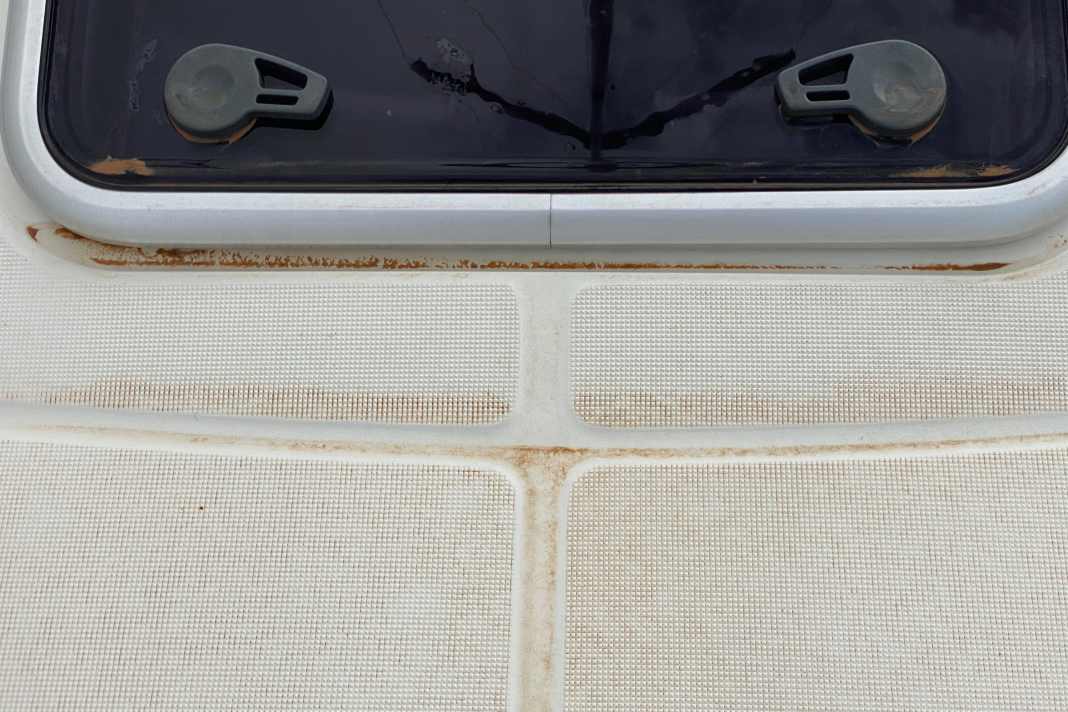





It's annoying: after the boat has been thoroughly cleaned and polished in winter storage, an unsightly reddish-brown layer of dust forms on everything shortly after leaving the shed. On the deck, the fittings, the canopy. The painstaking hours of winter work seem to have been in vain. In addition to the purely visual annoyance, this dust can also cause damage to the boat, ranging from scratches to increased wear and tear, if it is not removed properly. In most cases, this is Sahara dust. Boat owners in southern climes such as Croatia, Italy, France or Spain are familiar with it. Occasionally, however, this phenomenon also occurs in the north.
How Saharan dust gets onto the boat
Sandstorms frequently occur in the Sahara, whirling large quantities of dust and sand into the atmosphere. These particles can reach the higher layers of the atmosphere, where they are caught by the prevailing winds. The winds transport these particles over long distances, usually with the trade winds across the Atlantic, where the dust serves as an important fertiliser in the Caribbean and South America. In southerly winds, however, it can also reach Europe and Germany.
In the Mediterranean regions, this is usually the case with southerly winds such as the Scirocco/Jugo. As these are often accompanied by rainy weather, the rain washes the dust particles out of the atmosphere. This results in a reddish-brown rain sludge on the ground, also known as blood rain; in winter it is known as blood snow. The dust rarely makes it as far as the Baltic Sea region or further north, but up to 20 such events can occur per year. In these cases, it is usually transported over the Alps by foehn winds.
The effects of Saharan dust on boats
Saharan dust itself poses no greater danger than other dusts. However, the particles are very fine, almost flour-like. This is why they remain in the air for a long time and can penetrate into almost every nook and cranny on board. Whilst the dust on deck is only a nuisance in the first instance, the situation is different in other places. It settles in every little crevice, for example on the gearstick or in the windscreen surrounds. There it acts like a fine abrasive and can lead to increased wear and sluggishness.
Even electronics can be damaged if fine particles get into the housing of the displays.
If the dust gets wet, either through rain from the atmosphere or through subsequent settling on the deck, accumulations of dust can form in deeper areas and depressions. As soon as these dry, a hard crust forms.
How to remove Saharan dust
Sweeping:
If there is a lot of dust on the deck, you can first try to roughly remove it with a soft broom. But beware: any kind of mechanical cleaning could have a sanding effect, as you are rubbing very fine sand particles over the surfaces. Be particularly careful with the plastic windows of cake stands.
Wipe:
To remove dust effectively without damaging surfaces, it is advisable to wipe it off with damp, soft cloths or sponges. This prevents scratches caused by hard particles.
Rinse off:
The best way to tackle Sahara dust is with water. A powerful jet from the hose usually removes a lot of dust. The deck and fittings can then be rinsed again with water to which a light, environmentally friendly detergent has been added.
Stubborn dirt can also be tackled with a high-pressure cleaner, but at very low pressure and at a great distance so as not to damage the surfaces of the boat.
Rinse with salt water:
If there is not enough fresh water available at the mooring, as is the case in many Mediterranean regions, especially in the high season, or if you do not want to use fresh water unnecessarily for the sake of the environment, salt water will have to suffice. The same applies to rinsing as with fresh water. It can normally be used to wash the Sahara dust from the deck and fittings. However, you should rinse with fresh water at the very end if it is not enough for the whole boat, at least rinse the fittings. Otherwise, salt crystals can form after the water evaporates, which can lead to increased wear and sluggishness, especially in mechanical components.
Read also:
Effective protection against Saharan dust
Only a boat hall would offer complete protection against Sahara dust. However, partial protection can be achieved with a few measures:
- Use tarpaulins: This protection works well as a complete or partial tarpaulin for the boat or just the cockpit. The closer the tarpaulin is to the deck and hull, the better.
- Protection of the electronics: Sahara dust can penetrate electronic devices and damage them. Ensure that all electronic devices are well protected, the easiest way to do this is to fit the covers.
- Check ventilation openings: To prevent Saharan dust from finding a way below deck, make sure that the ventilation openings, such as hatches or forced ventilation, remain largely closed during days with Saharan dust exposure.

